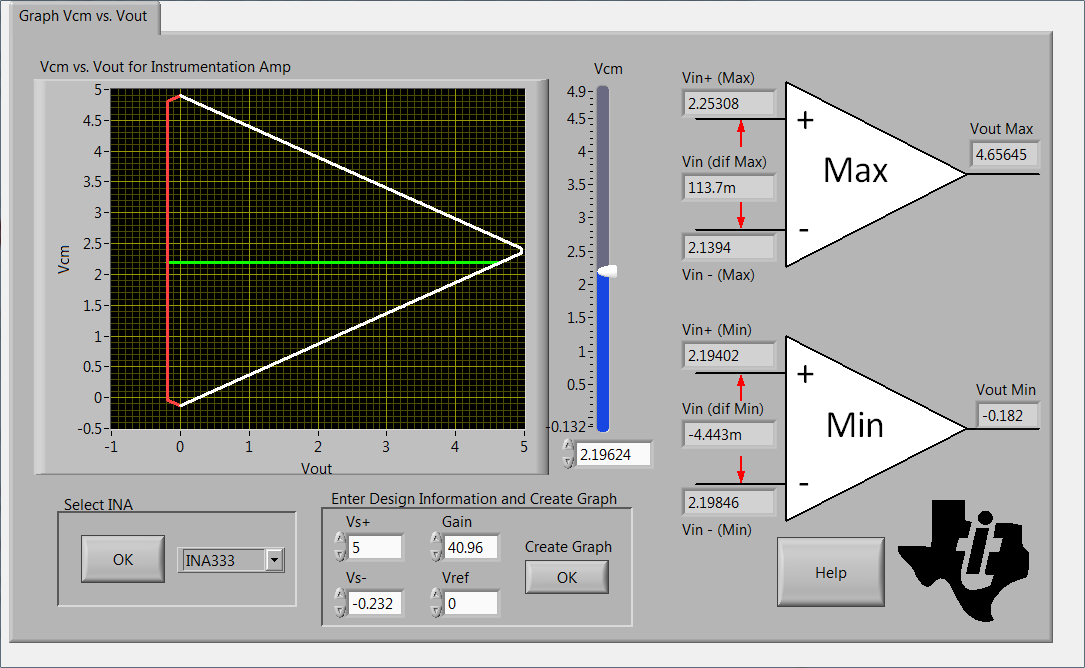I am looking at using the INA333 instrumentation amplifier to condition a pressure sensor. The sensor has an input voltage of 10V nominal with supply current of 1.5mA. The output is from 0-100mV using an internal wheatstone bridge configuration. I would like to have an output signal of 0-4.096V or 0-2.048V, so the full dynamic range of an ADC can be utilized. I will be using the INA333 in a single supply configuration with a possible negative bias generator on V- to have the output swing to GND.
The issue that I am facing is the input common mode range versus output voltage. Is there a suggestion for a replacement part or something externally that I can do raise the Vcm close to midway of the supply. I saw a reference design that used a resistor to GND where GND is placed on the wheatstone bridge but that requires knowing exactly what the resistances are in the bridge.
Thanks



